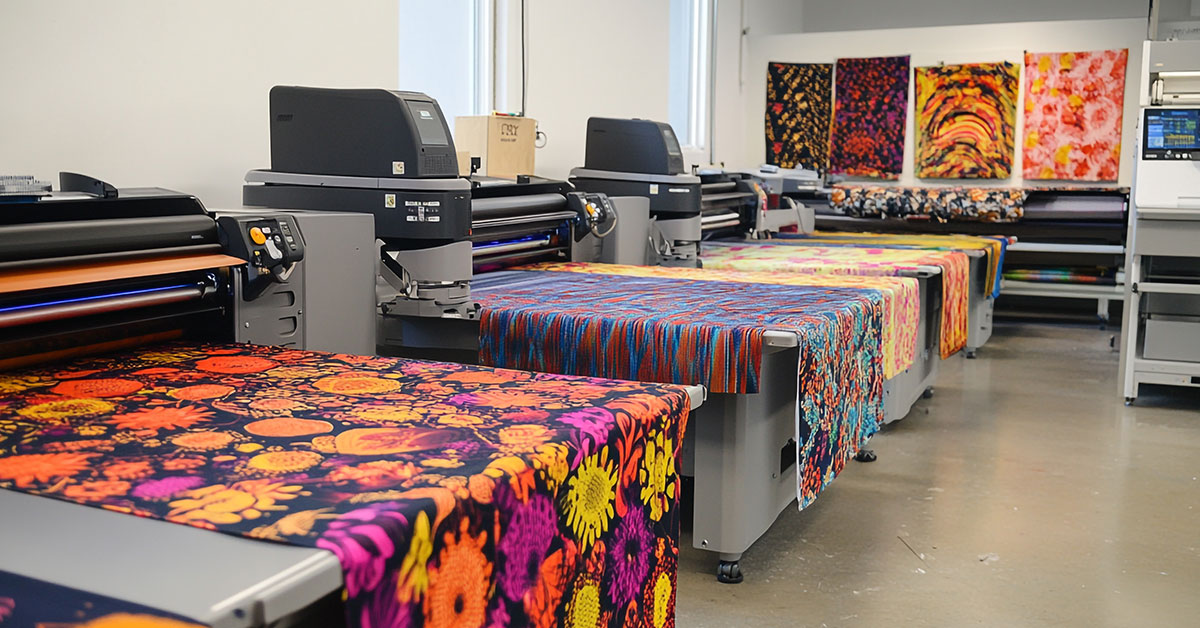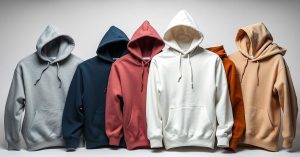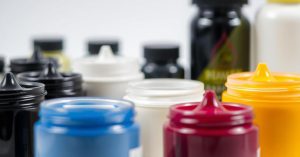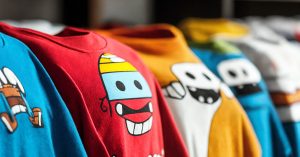Have you ever wondered if a single printing technology could revolutionize your custom apparel business by replacing both screen printing and DTG methods? Direct to film printing pros and cons present a compelling case for modern print shops, but understanding the complete picture requires examining both the remarkable advantages and potential challenges that come with this innovative printing method.
Direct-to-film printing delivers stunning, photo-realistic results that work seamlessly with most file formats through an intuitive drag-and-drop workflow, utilizing white-capable ink and clear transfer film to achieve sharp detail reproduction on both light and dark fabrics. Industry reports consistently show that DTF prints maintain their quality through 30–50 wash cycles, establishing them as a durable solution for businesses seeking longevity in their custom printing operations.
The appeal for small businesses becomes immediately apparent when considering DTF’s cost-effective upfront investment, which eliminates the need for screens and lengthy setup times that traditionally make short runs and full-color jobs prohibitively expensive for startups and independent makers. However, smart operators must carefully evaluate maintenance requirements, ventilation needs, and production speed limitations before committing to larger volume operations with their DTF printer.
Key Takeaways
Understanding the fundamental aspects of DTF printing technology helps businesses make informed decisions about their printing investments:
- DTF excels at producing vibrant, detailed prints with minimal artwork preparation and competitive per-job material costs
- The DTF transfer process utilizes cured film combined with heat press application, enabling flexible production schedules and off-site pressing capabilities
- Film printing pros and cons include exceptional substrate compatibility balanced against higher routine maintenance demands
- Comprehensive comparison of direct to film printing pros and cons against DTG printing, traditional screen printing, and sublimation methods reveals distinct advantages for specific use cases
Successful scaling of DTF printing operations requires careful consideration of ventilation systems, cure processes, and total cost of ownership calculations
Table of Contents
What is Direct to Film Printing and How the DTF Process Works
Direct-to-film printing represents a modern evolution in textile decoration, where intricate designs are first printed onto specialized transfer film before being applied to various substrates through heat and pressure application. This innovative printing method that involves printing utilizes print heads similar to those found in high-quality Epson printers, accepting CMYK color channels plus dedicated white ink for enhanced versatility across different fabric colors.
Print shops particularly appreciate the flexibility that DTF offers, as it handles both RGB and CMYK artwork with minimal preparation requirements, making it exceptionally well-suited for short production runs and on-demand order fulfillment where quick turnaround times are essential for custom printing applications.
Overview of Direct-to-Film Technology
The core DTF technology creates transfers by precisely laying specialized DTF inks onto coated transparent film surfaces, followed by a partial curing process that sets the colors while maintaining the proper consistency for powder adhesive application. White ink serves as a crucial base layer that significantly boosts color vibrancy and opacity when printing designs directly onto the film for dark-colored fabrics.
Professional operators rely on specially formulated coated special film that ensures optimal ink adhesion, consistent color reproduction, and reliable release characteristics during the critical heat press transfer stage. DTF eliminates the need for complex pre-treatment processes that other printing methods typically require.
Step-by-Step DTF Printing Workflow
The DTF printing process begins with artwork preparation in professional graphics software, where designs are properly separated to accommodate white underbase requirements for optimal color saturation. A specialized DTF printer then prints the complete image onto a transfer film using formulated DTF inks that provide the flexibility and durability required for textile applications.
Following the initial printing phase, the wet print passes through a controlled curing or low-temperature oven system that partially sets the inks to the proper tackiness level. After this initial curing stage, adhesive powder is carefully applied to the printed surface using specialized DTF equipment, with excess powder systematically removed to ensure even coverage.
The film with applied powder then undergoes a secondary curing stage where controlled heat causes the powder to melt and create a strong molecular bond with the printed ink layer. For final transfer execution, operators position the prepared DTF transfer on the target garment and utilize a heat press to apply precise temperature and pressure specifications, resulting in high-quality prints that adhere effectively to cotton, polyester, blends, leather, and numerous other substrate materials.
How DTF Differs from DTG, Screen Printing, and Sublimation
Understanding the distinctions between printing methods helps businesses choose the right printing method for their specific applications. Direct to garment printing applies ink directly onto fabric surfaces but can encounter significant challenges with certain materials and textured surfaces, whereas DTF circumvents these limitations by utilizing an intermediary transfer film that accommodates printing on an extensive range of substrates.
Traditional screen printing relies on stencil-based systems with substantial setup costs for multi-color designs, while DTF simplifies full-color, photo-realistic design reproduction without requiring lengthy screen preparation processes. When considering which is better dtg or dtf, the answer largely depends on your specific production needs and substrate requirements.
Unlike screen printing, DTF doesn’t require separate screens for each color, making it more cost-effective for complex designs. Sublimation printing creates chemical bonds between dye and polyester fibers, performing optimally on light-colored polyester garments, but DTF transfers function effectively on cotton and mixed blend fabrics, providing significantly greater versatility for diverse product lines. Additionally, DTF prints incorporate white underbase capabilities that sublimation simply cannot offer for dark garment applications.
Common Equipment and Supplies Used in DTF Operations
Essential supplies for successful DTF printing operations include high-quality transfer film, specialized powder adhesive, and DTF inks specifically formulated for optimal flexibility and wash-fastness performance. Core printing equipment configurations typically feature DTF printers available in both desktop and industrial roll-to-roll sizes, precision powder shakers or automated applicators, dedicated curing ovens or conveyor dryers, and commercial-grade heat presses for reliable final transfer execution.
Shop owners must carefully consider electrical power requirements for curing equipment, implement filtered ventilation systems when processing adhesive powders, and strictly follow manufacturer specifications regarding compatible film and ink combinations. DTF printers need regular maintenance protocols for print heads and implementing regular cleaning schedules helps prevent costly clogs while maintaining consistent printing process quality throughout operations.
Direct to Film Printing Pros and Cons
The landscape of modern printing has been significantly influenced by DTF technology, which offers compelling advantages alongside specific challenges that require careful consideration. This comprehensive analysis of direct to film printing pros and cons will help you understand the complete picture of trade-offs that affect both established print shops and emerging crafters in today’s competitive printing industry.
Immediate Advantages Summarized
DTF technology produces exceptionally vibrant, high-quality prints with resolution capabilities that showcase fine lines and realistic color reproduction that rivals traditional photography printing methods. The specialized rubberized ink formulations contribute to enhanced print quality and durability, ensuring that designs maintain their visual integrity through extended wear and washing cycles.
The substrate compatibility offered by DTF extends across diverse materials including cotton, polyester, nylon, leather, and specialty fabrics, while the relatively low initial investment in DTF makes this printing technology particularly attractive for small-batch custom printing work without requiring substantial capital investments. DTF provides exceptional versatility that traditional printing methods simply cannot match.
Primary Drawbacks Summarized
The most significant cons of DTF printing center around maintenance intensity and production throughput limitations. The specialized ink formulations tend to cause printhead clogging issues that necessitate daily cleaning routines, creating additional operational costs and potential downtime scenarios that can impact productivity in busy printing operations.
DTF printing operations also generate fumes during the ink curing process that require robust ventilation systems and air filtration equipment to maintain safe working conditions. Additionally, the inherent production speed limitations of DTF systems often require automation investments to achieve competitive throughput rates for larger volume orders, unlike methods like screen printing that excel at high-volume production.
Comparison Table: DTF vs Other Printing Methods
| Factor | DTF | DTG | Screen Printing |
| Substrate Compatibility | High — cotton, polyester, nylon, leather | Best on cotton and natural fibers | Good across fabrics with proper ink selection |
| Color Detail | Excellent for photo-realistic reproduction | Excellent on suitable fabrics | Very good for spot colors; complex for gradients |
| Setup Cost | Low per-job; moderate equipment investment | Moderate equipment cost; minimal per-job setup | High screen setup; low per-piece at volume |
| Production Speed | Slow to moderate; improves with automation | Moderate for single-step applications | Very fast for large production runs |
| Maintenance Requirements | Frequent printhead care; powder/dryer upkeep | High maintenance for white inks; regular cleaning | Lower daily maintenance; intensive screen prep |
Benefits and Strengths of DTF Printing for Businesses and Crafters
DTF printing delivers numerous strategic advantages for both established businesses and independent crafters seeking to expand their custom decoration capabilities without significant infrastructure investments. The combination of vibrant output quality and operational flexibility makes DTF particularly well-suited for studios focusing on one-off custom orders and small-batch production runs where printing t-shirts and various garments requires versatility.
The scalability of DTF systems accommodates various production philosophies, from compact desktop units perfect for startup operations to sophisticated roll-fed systems capable of handling increased volume demands as businesses expand their market presence in the competitive printing world.
High-Quality, Vibrant Prints and Accurate Color Reproduction
The specialized DTF inks and compatible film systems work together to produce exceptionally rich colors with precise color matching capabilities that maintain consistency across production runs. The print quality demonstrates remarkable clarity in gradient transitions and fine text reproduction, enabling shops to reliably reproduce complex logos, detailed artwork, and high-resolution photographs with professional results that satisfy even the most demanding customers.
Customer satisfaction remains consistently high due to the sharp edge definition and color stability that DTF prints maintain even after multiple washing and wearing cycles, establishing trust in the durability of the final product and building long-term business relationships.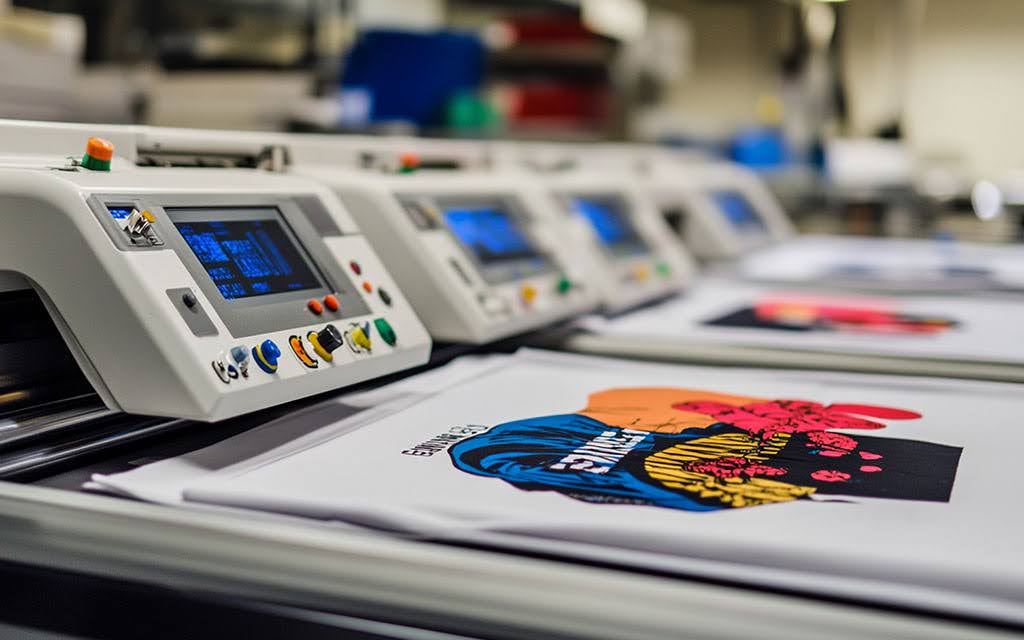
Versatility Across Substrates
One of the most compelling advantages of DTF lies in its remarkable substrate versatility, effectively handling cotton t-shirts, performance polyester sportswear, leather accessories, and nylon bags within the same production setup. This flexibility opens entirely new product categories for printers and crafters, allowing them to diversify their offerings without investing in multiple specialized printing equipment systems or learning complex new processes.
The consistent setup requirements support promotional items, home décor applications, and specialty fabric decorations without requiring major operational adjustments or additional training for staff members, making it an ideal printing method to use for diverse applications.
Intricate Design Reproduction and Fine Details
DTF printing excels at reproducing intricate, photo-realistic designs with exceptional fine detail retention that rivals professional photography reproduction. The ability to print complex halftones, small text elements, and elaborate artwork with crisp precision allows designers to offer sophisticated prints that meet professional standards across various applications.
These capabilities enable businesses to make DTF printing their go-to solution for high-end custom work where detail quality cannot be compromised, setting them apart from competitors using less capable printing methods.
Low Per-Job Setup Cost and Short Run Advantages
DTF technology provides clear economic benefits for short production runs and custom order fulfillment by eliminating traditional screen setup fees and lengthy preparation time requirements. This cost structure makes short runs both affordable and profitable, while crafters and print-on-demand businesses can offer full-color printing services without prohibitive upfront investments.
The DTF printer benefits include rapid turnaround capabilities and consistent pricing structures that scale efficiently from single-item orders to small batch production without the dramatic cost increases typically associated with traditional printing methods like screen printing.
Trade-offs and Limitations to Plan for with DTF Printing
While direct-to-film printing offers exceptional image quality and operational flexibility, it also presents specific trade-offs that directly impact daily operations, profit margins, and facility setup requirements. Understanding these disadvantages of DTF printing helps businesses make informed decisions when evaluating DTF technology against their specific operational goals and market demands.
Production Speed and Throughput Challenges
Entry-level DTF systems typically produce 3–8 transfers per hour, creating bottlenecks when handling orders exceeding 25 garments or operating under tight delivery deadlines. Single-printer operations face significant scalability challenges that may require additional equipment investments or upgraded high-capacity systems to meet growing demand without compromising delivery commitments.
Exploring DTF printing for high-volume applications requires careful consideration of these throughput limitations compared to screen printing methods that can process hundreds of pieces per hour once properly set up and running efficiently.
Maintenance Requirements and Equipment Considerations
The specialized nature of DTF inks requires more intensive maintenance protocols compared to standard digital printing applications. Epson-derived printheads demand daily care including systematic flushing, capping station inspections, and frequent usage to prevent costly printhead clogs that can result in expensive replacement costs and unexpected downtime.
DTF printers need regular maintenance attention to maintain optimal performance, with replacement printhead costs representing a significant ongoing operational expense that must be factored into long-term profitability calculations. Like any printing technology, proper maintenance schedules are crucial for consistent operation.
Operational Requirements and Infrastructure
| Requirement Category | DTF Considerations | Business Impact |
| Ventilation | HEPA/charcoal filtration for polymer fume management | Facility upgrade costs and ongoing filter replacement |
| Power Infrastructure | 220V service for curing ovens and dryers | Electrical system modifications and increased utility costs |
| Space Planning | Floor space for roll-to-roll systems and curing equipment | Facility expansion or reconfiguration requirements |
| Consumable Costs | PET film, powder adhesive, specialized inks | Higher ongoing material costs vs traditional methods |
| Waste Management | Used film disposal and excess ink handling | Environmental compliance and disposal costs |
Supporting Infrastructure and Environmental Considerations
Roll-to-roll DTF systems require substantial floor space allocation and upgraded electrical infrastructure to support 220V curing ovens and conveyor dryers. The curing process generates polymer fumes that necessitate robust ventilation systems with HEPA and charcoal filtration to protect staff health and ensure regulatory compliance with local air quality standards.
Advanced DTF operations using film produce ongoing waste streams including used transfer film and excess ink that require proper disposal planning and may involve additional environmental compliance costs depending on local regulations governing commercial printing waste.
Practical Setup, Troubleshooting, and Optimization Tips
Successfully implementing DTF printing requires careful attention to equipment selection, workflow optimization, and maintenance procedures that ensure consistent output quality while minimizing downtime and waste. These practical considerations help businesses make DTF printing a profitable and reliable part of their service offerings.
Choosing Hardware and Matching Supplies
When selecting a DTF printer, evaluate print resolution capabilities, color channel configurations, and production speed specifications that align with your volume requirements. Higher DPI settings enable finer detail reproduction, while machines with dedicated white channels perform better when printing on dark garments requires optimal opacity.
Compatibility between film and ink systems is crucial for consistent results, so verify that coated DTF films work properly with your chosen ink formulations before making bulk supply purchases. For high-volume applications, roll-to-roll systems provide better efficiency, while desktop units offer flexibility for sampling and small-batch work.
Production Optimization and Quality Control
| Optimization Area | Key Action | Impact on Operations |
| Printer Selection | Match DPI, white channels, and film compatibility | Ensures detail quality and reliable transfers |
| Powder Application | Use automated shakers for even distribution | Prevents peeling and improves wash durability |
| Curing Process | Follow temperature and time specifications | Secures adhesive bond and eliminates soft spots |
| Workflow Batching | Group similar jobs and colors together | Increases daily throughput and reduces waste |
| Quality Control | Implement checkpoints throughout process | Catches issues early and maintains consistency |
Daily and Scheduled Maintenance Best Practices
Establishing comprehensive maintenance routines prevents costly downtime and ensures consistent print quality throughout extended production runs. Daily procedures should include printhead wetting, nozzle pattern checks, and automated cleaning cycles as recommended by manufacturer specifications.
Weekly maintenance schedules should incorporate deep cleaning procedures, ink system flushes, and inspection of critical components including powder application systems and curing equipment. Maintaining spare printhead inventory and essential replacement parts helps minimize disruption when components require service or replacement.
How to Decide if DTF Printing is the Right Method for Your Needs
Making an informed decision about DTF implementation requires careful analysis of your current order volume patterns, substrate requirements, and delivery timeline expectations. DTF printing excels in scenarios involving small to medium order quantities, detailed design reproduction, and diverse material applications including cotton, polyester blends, and specialty substrates like leather accessories.
However, businesses primarily focused on high-volume production runs may find that traditional screen printing or automated DTG systems provide better throughput rates and per-unit economics for their specific operational model and market demands.
Cost Analysis and Investment Planning
Comprehensive cost evaluation should encompass initial investment in DTF equipment, ongoing consumable expenses including film, powder, and ink, plus facility modification requirements including specialized ventilation and electrical upgrades. Consider the total cost of ownership including replacement parts, expected maintenance downtime, and consumables throughout the equipment’s useful life.
For businesses just beginning their DTF journey, smaller desktop systems provide an excellent testing platform to evaluate workflow compatibility and market response. Established operations should conduct thorough comparative analysis against existing DTG printing and screen printing capabilities, testing wash durability, substrate compatibility, and production efficiency metrics.
Evaluating Your Printing Needs
DTF printing is its cost-effectiveness for short runs and complex designs becomes apparent when comparing setup times and material costs against traditional printing methods. If your operation focuses on diverse substrate decoration with detailed, full-color designs, DTF may represent the optimal solution for expanding service capabilities and improving profit margins on custom orders.
Consider whether your printing needs align better with DTF‘s strengths in versatility and detail reproduction, or if high-volume, repetitive production schedules would benefit more from automated screen printing solutions that prioritize speed and efficiency over design complexity. The right printing method depends entirely on matching technology capabilities with your unique market position and operational requirements to ensure sustainable growth and customer satisfaction.

